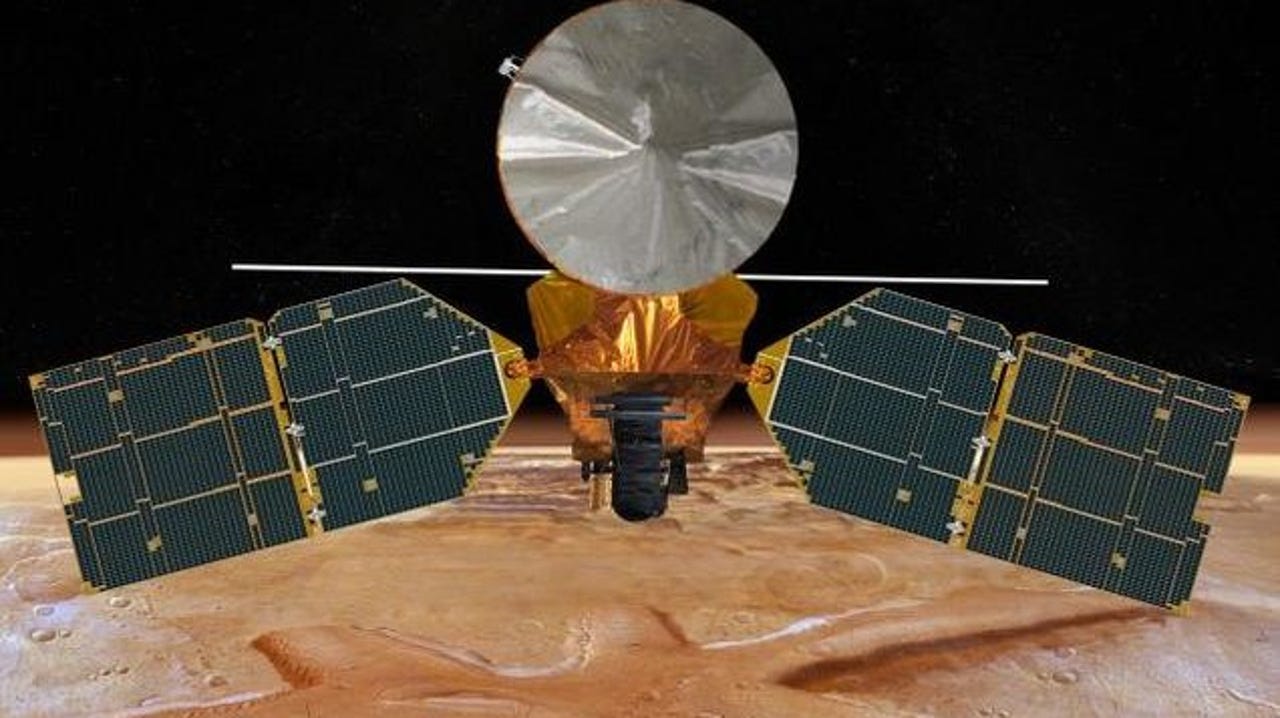India's Mars Mission, executed 'on a budget less than Gravity's' wows the world

You may already know this by now — yesterday, India accomplished an unreal feat: It put a satellite into the orbit of Mars and became not just the first country in the world to do so on its first attempt, but also the first Asian country to do so. Yes, you read that right. The first Asian country to toss a satellite into Mars' orbit was India and not China. The only other ones to accomplish this feat are the US, the Russians, and a joint European effort.

The 3,000lb (1,350kg) Mangalyaan, translated as "Mars craft" in Hindi, took off 10 months ago and began conducting an elliptical orbit around Earth. After a few short bursts from its rockets, it started heading towards Mars. On Monday, scientists at Indian Space Research Organisation (ISRO) — India's NASA, located in Bangalore — further tweaked the course of the craft through a delicate manoeuvre that put it firmly into Mars' orbit.
Apparently, NASA's Curiosity Rover, tooling around the red planet since August 6, graciously tweeted "Namaste, @MarsOrbiter! Congratulations to @ISRO and India's first interplanetary mission upon achieving Mars orbit," to which the cheeky orbiter replied "Howdy @MarsCuriosity ? Keep in touch. I'll be around."
Almost overnight, India is now at the forefront of winning deals in the wildly lucrative $200 billion+ bazaar for space technology. This July alone, India successfully put five satellites in orbit for a wide range of international clientèle, such as the Space Flight Laboratory at the University of Toronto's Institute for Aerospace Studies, Airbus Defence & Space Co, German Aerospace Center, and Nanyang Technological University, Singapore. This launch is sure to bring even more high-value business the country's way.
Another widely publicised standout feature of the Mars feat was its cut-rate price — a paltry $75 million, compared to the exorbitant price tags that many of these missions have racked up. (The Economic Times points to the the US Maven launched on Monday, which apparently took six years and cost $679 million.) Prime Minister Modi poignantly joked that the Mars mission costs India less than the budget for Sandra Bullock's Gravity.
Projects such as these are, as they have often been the world over from Sputnik to Apollo, as much about exploring the frontiers of technology as they are about forging a sense of national pride.
Still, Mars hasn't stopped many people from placing this achievement firmly in the context of India's dire poverty — 300 million people still live on $1.25 a day, and a third of its population doesn't have electricity. Moreover, the country has serious health problems from malnutrition to diabetes. Female foeticide is still pervasive, especially in the north, considerably skewing the ratio of women to men.
Other sniggers, riffing off the satellite's mission to detect methane levels on the planet, pointed to the massive public-defecation problem in India, which in turn is a font for a host of serious health issues. (Coincidentally, this — and the building of toilets — is something that Modi has mentioned several times in the last several months).
Predictably, this has set off a war of words between indignant Indians and their detractors. (Check out the often hilarious exchanges in the Comments section of this Guardian article as an example.) Some, in other forums and articles, have pointed to the fact that India, before full-fledged British colonisation at the end of the eighteenth century, accounted for 24 percent of the world's GDP and was a major centre for the world's textiles, spices, and other industries and trade. By the time the British left, this had been whittled down to a mere 4 percent.
Also, pre-British India experienced no large famines, but has suffered at least five ever since the East India company arrived and spread its tentacles across the country. The last one occurred as recently as 1942-43, where between 1.5 million and 3 million died from starvation because of British apathy and resource extraction. Recently unearthed records show that then-British Prime Minister Winston Churchill, who once said "I hate Indians. They are a beastly people with a beastly religion," ensured that ships carrying cereals from Australia during the famine give India a miss on their way to the Mediterranean, where there was ample cereal available.
Whether Indians were eminently capable of building railroads, educating their public, devising sophisticated and inclusive health systems, and structuring pioneering scientific undertakings (as they have done with the Mars Mission) without a helping hand from the British requires a more involved debate elsewhere.
What is more relevant to this piece, however, is the spirit of innovation, tinkering, and "making do" that abounds in India, often with low-cost, local solutions that do the job of pricey foreign ones. This of course has been fetishised as "jugaad", and repeated and analysed ad nauseum by everyone from management consultants to academics trying to make a buck off it. But what I'm talking about goes beyond "workarounds" into the realm of original, innovative local solutions to local problems.
There are many, from coconut tree climbing devices to the more sophisticated, low-cost ultrasound machines. Here is a short film I made of a fruit seller, Syed Sejad Ahmed, in Bangalore who, with no engineering background, was intent on building a solar car. It may not yet be a threat to Tesla nor slick enough for a glossy car magazine but it's just one small example of the drive and obsession to create that exists throughout the more modest and seemingly unremarkable alleyways of India that explains, in some small way, the ISRO Mars mission.